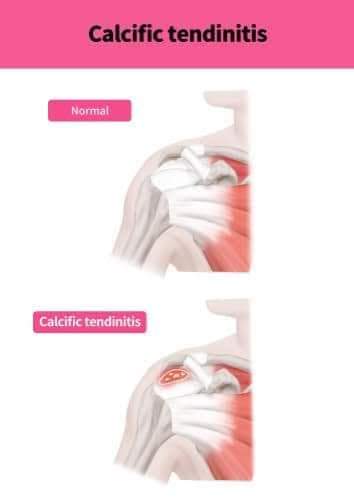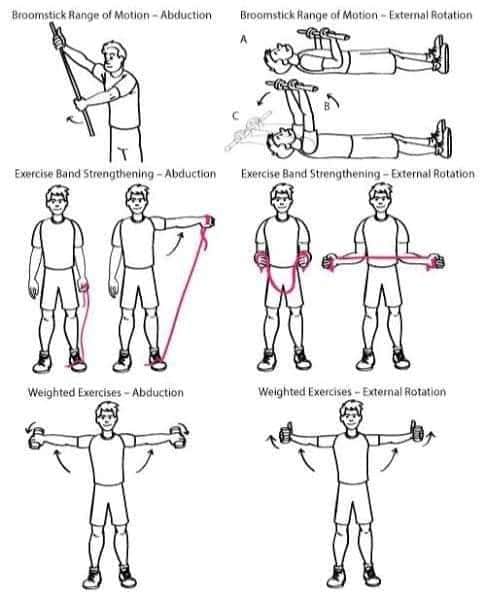Calcific tendinitis, also known as calcific tendonitis, is a condition that affects tendons, the tough, flexible tissues that connect muscles to bones.
In calcific tendinitis, calcium deposits form within the tendons, causing inflammation and pain.
The most commonly affected tendons are those around the shoulders, but it can also occur in other parts of the body, such as the hips, knees, and elbows.
The exact cause of calcific tendinitis is not always clear, but it is believed to result from a combination of factors, including repetitive stress or overuse of the affected tendon, trauma or injury to the area, and changes in blood supply to the tendon.
Typical symptoms of calcific tendinitis include pain, often with a gradual onset that worsens with movement or use of the affected joint. The pain can be sharp and intense, and it may limit the range of motion.

The affected joint may also feel stiff, making it difficult to move or perform certain activities.
Swelling and tenderness may be present around the affected tendon, and the joint may have limited mobility due to pain and stiffness.
A doctor will typically diagnose calcific tendinitis based on the patient’s medical history, physical examination, and imaging tests such as X-rays or ultrasound.
Treatment options for calcific tendinitis include rest, ice, and over-the-counter pain medications to manage symptoms.
Physical therapy may be recommended to improve joint flexibility and strength.

In some cases, a doctor may use procedures such as extracorporeal shockwave therapy (ESWT) or needle aspiration to break up the calcium deposits and reduce inflammation.
Severe or persistent cases may require corticosteroid injections or, in rare instances, surgical intervention to remove the calcium deposits. It’s essential for individuals experiencing symptoms of calcific tendinitis to seek medical attention for proper evaluation and treatment.
